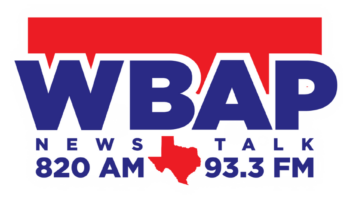Trends in Technology: Electronic News Gathering for Radio
Sep 1, 2014 3:34 PM, Doug Irwin, CPBE AMD
When you consider the viability of radio in the long-term you can frame it completely in terms of �content.� Clearly, if listeners want a certain content that is only available from a radio then they”ll have no choice but to listen to one. While listeners have an ever-increasing number of choices from which to get music, there are few choices when it comes to news and sports content. It”s for this reason that I (along with others) believe that talk, news, and sports content will become more important for radio as time moves along.
For many listeners a big attraction of local radio is local news; and therefore, a station”s ability to report on local news stories is important to its success. After all, you can get national and international news from any number of sources, right? But when it comes to local politics, or localized disasters like fires, or local traffic problems, local radio is likely one of a few choices. In this article we”re going to talk about the ways and means by which radio stations gather and report on local news.
KFI is one of two 50 kW AM stations that generates its own news content in Los Angeles and since it”s a member of the group of stations I work for naturally the topic is �close to home.� Our 3 field reporters use the (nearly) ubiquitous public internet for filing reports and doing live reports on-air, although the older tried-and-true techniques are still in use as well (more on that below).

Figure 1: Reporter in vehicle with ENG equipment
Each of the station”s three field reporters has a vehicle assigned to them and along with each vehicle are the various devices necessary to record and edit their stories. (Figure 1.) Reports are recorded and edited on the reporter”s laptop computer, saved as .mp3 files, and e-mailed back to the newsroom for use in newscasts. �Live-shots� are more complicated because one of our 6 RPU receive sites needs to have good reception of the remote vehicle, which are using roof-mounted omni antennas, and transmitting with about 20 watts.
Since each of our reporters has a �smartphone� naturally we”ve experimented with �apps� that can be used for newsgathering purposes. In particular, since we use Comrex Access, �Luci-Live Lite� is an inexpensive app that all of our reporters have. Luci Live Lite enables a limited-feature-set version of Luci Live (see below) removing the record, edit and ftp functions, and limits the codec choice to the slightly- lower-quality G.722. In all other ways, though, it provides the same interface of Luci Live, providing an easy-to-use application for broadcasters who need simplicity in both setup and operation.
The full �Luci Live� is a mobile broadcast application that enables �studio-quality� news segments to be streamed via laptop or mobile phone. Its on-screen controls emulate console faders, while additional features such as audio capture, editing and ftp upload enable broadcast-ready content to be produced quickly. When used with Comrex hardware codecs, Luci Live can deliver HE-AAC audio in both directions with moderate delay. Connections can be made via the N/ACIP protocol (which uses SIP), or the native Luci RTP mode.
Linphone is available for free for Android phones and it has been tested to work with Comrex codecs. It uses the Opus audio algorithm�a newer, high quality (according to Comrex) low delay choice which has been included in Comrex codecs starting with firmware 3.0. LinPhone doesn”t require registration and can dial directly to the IP address of your codec.
Comrex also offers a free app called ARC2, which is a �wrapper� around C-SIP Simple, enabling AAC-ELD on an Android device. They say the set-up is complicated–but it”s a �one button push� after that and works well.
Another very well-known provider of IP codecs for use in news gathering applications is Tieline. Their smartphone app is called �Report-IT� and it”s available for either Android or iOS. It allows the remote reporter to talk back to another Tieline IP codec at the studio with 15 kHz audio bandwidth (real-time) or to record �off-line� with up to 20 kHz of audio bandwidth, using the smartphone”s built-in microphone. Using Report-IT you can record interviews, edit them and then file via FTP. You can also build a list of edited recordings, and play them back (�donuts�) while delivering a real-time report. From a practical standpoint though, you would need a mic adaptor, and external mic, to use while doing this so that you could talk and manipulate the controls on the phone at the same time; that”s where a mic adaptor comes in (see more on that below).
Back at your studio headquarters, a Tieline Merlin Plus would be a very handy codec for connecting to smartphones in the field because it can handle up to 6 full-duplex, monaural connections simultaneously. Merlin PLUS is a single RU IP codec designed to connect over the full suite of wired and wireless IP networks, including Public Wide Area Networks (WANs); Private Local Area Networks (LANs); 3G and 4G wireless Networks; and Wi-Fi and WiMAX Networks.
continued on page 2
Trends in Technology: Electronic News Gathering for Radio
Sep 1, 2014 3:34 PM, Doug Irwin, CPBE AMD
As I mentioned previously it might make a reporter”s life easier to have a mic/headphone adaptor for an Android or iPhone. Tieline makes their own mic adaptor; but you can also check other sources, such as http://www.kvconnection.com/.
Even with the best smartphone and the most effective app, if the 3G/4G wireless network is under a barrage of users, the remote audio connection will likely fail. This fact has limited the usefulness of smartphones for �live� reports. Can anything be done to mitigate this problem? There are several companies making �bonding� devices that aggregate bandwidth from multiple wireless sources–the idea being that, via one network or another, the remote user will benefit from enough bandwidth to make a robust connection, and with multiple network choices, that the problems associated with network connectivity will be reduced. (I would never dare say �eliminated.�) Let”s take a look at several companies tackling this problem.
Mushroom Networks offers a product known as Portabella, which comes in two models: the standard Portabella 141 for indoor use; and, the ruggedized Portabella 141i for mobile or portable deployments (https://www.mushroomnetworks.com/product/portabella). Both support 3G/4G bonding. (Thanks to John Lorentz of WINS for the heads-up on this product.) The Portabella has 4 USB-based ports for cellular wireless data cards. The 10/100baseT Ethernet based LAN port connects to the local network or devices at the mobile location. Back at your studio location, you would install the Mushroom Networks Truffle, which is a single RU, packet-level load balancing router with WAN aggregation and Internet failover technology. With the Truffle, multiple DSL, cable modem or T1 services can be combined to provide higher speed and more reliable Internet access�namely for our application–making multiple connections to reporters in the field. Truffle is also a stateful firewall, bandwidth manager, traffic monitoring and traffic shaping appliance with adaptive Quality of Service features.
Viprinet has a similar product line, the operation of which can be seen in Figure 2 (http://www.viprinet.com/en/products/multichannel-vpn-router-modular). The Multichannel VPN router goes in the field, connected to multiple wireless carrier networks. This particular device can accommodate up to five connections; four by radio, and one local Ethernet connection. At the studio/HQ end, the Multichannel VPN hub is installed, and its job is to aggregate all the packets originating in the field, coming in via multiple IP sources, in to a single packet stream. It”s important to note that the stream can be used locally (same datacenter) or forwarded to another location via Ethernet. What”s interesting about this is the potential for shared use amongst stations in an ownership group, with different locations.

Figure 2
The final company I”ll make mention of for 3G/4G bonding is PepLink; their system is known as Speedfusion (http://www.peplink.com/technology/speedfusion-bonding-technology/). Like the other two mentioned, it requires a device in the field (in this case the Pepwave �Max�) and an aggregator at your HQ, in this case known as the Peplink �Balance�. Features are similar, although I will make mention in particular of the 256-bit AES encryption used in Speedfusion.
continued on page 3
Trends in Technology: Electronic News Gathering for Radio
Sep 1, 2014 3:34 PM, Doug Irwin, CPBE AMD
What if Disaster Strikes?
In addition to the more �modern� ways of gathering news and filing reports, KFI has what many (including myself) consider an �old-fashioned� ENG system, based completely on VHF and UHF radio. Why, in this day and age, would any station keep such a system in place, you might wonder? The answer is very simple: historically, when major disasters have hit an area, the cell-telephone system fails. The classic example is that of Hurricane Katrina, covered in an article I wrote in 2005 (�When Disaster Strikes� http://radiomagonline.com/transmission/radio_disaster_strikes_during/). Regarding the immediate aftermath of Katrina, Marty Hadfield, then director of engineering for Entercom (owner of WWL radio) told me: �The worst part is when you have lots of people concentrated in one spot; the cellular system gets overloaded. All the downtown (New Orleans) sites were constantly overloaded. After about three days though, people”s batteries began dying, and so the cell sites came back in to a useable condition.� The very last thing you want to happen during an important, once-in-a-career news event is for your means of reporting to be dead. Thus, stations such as KFI maintain their radio systems.
So what does it take to effectively cover a metro the size of Los Angeles? The most succinct response is probably just this: many receivers. The KFI system consists of three parts:
- � A VHF remote base station, used for communication between the newsroom and all remote vehicles
- � Multiple UHF RPU receivers used to cover the metro;
- � IFB transmitters that are used to feed real-time in-studio talent audio out to the remote location
The VHF �2-way� system that the news room uses to communicate with our three remote vehicles is actually a remote base station that is located at our Beverly Hills transmitter site (for KYSR-FM). For all intents and purposes, it”s simply an extension of our intercom system: the push-to-talk button is located at the editor”s position at our Burbank location. Audio gets sent up to the KYSR site on a non-equalized audio circuit provided by AT&T; return audio from the receiver heads back down to Burbank in a similar fashion. The base station is a �legacy� Motorola MTR-2000. (Figure 3.)

Figure 3: MTR2000 Base Station
Beverly Hills is at the north end of the metro, though, so we need additional receiver locations. We have two: first is the KFI transmitter site at La Mirada, which is about 16 miles southeast of downtown Los Angeles. The second remote receiver location is at Pleasants Peak, which is a 3500+ foot peak that is about 40 miles southeast from downtown. This site gives us good coverage of the southern end of the metro (meaning Orange County). (Figure 4.)

Figure 4: Pleasant’s Peak remote receiver location
Back at our Headquarters in Burbank we make use of a Motorola voting system in order to determine just which receive site audio gets used in the return path for the intercom (2-way) system. The voter decides between the Beverly Hills audio, the KFI transmitter site audio, and the Pleasants Peak site audio, which finds its way back to Burbank (more on that later).
continued on page 4
Trends in Technology: Electronic News Gathering for Radio
Sep 1, 2014 3:34 PM, Doug Irwin, CPBE AMD

RPU and IFB equipment at transmitter site
Aside from the basic communication that the 2-way system provides, we have a higher-quality means of gathering audio from the remote news vehicles: our set of RPU receivers. The large metro, combined with the mountainous terrain of southern California, compels us to use multiple locations. Working from north to south we have:
- � The Beverly Hills site (same as the 2-way) which covers San Fernando Valley
- � Verdugo Hills (northeast of downtown LA) which covers SFV well, and much of metro
- � Our own studio HQ in Burbank
- � Mt Wilson (at the KOST transmitter site) which covers the metro well
- � East LA (at the KLAC transmitter site) which provides better coverage of downtown LA, including City Hall and Police headquarters
- � The Pleasants Peak site, which covers the southern end of the metro
We use T1s to get the receiver audio back to our Burbank location. The two receivers mentioned for Pleasants Peak are backhauled via a dual-channel inner-city relay to the KFI transmitter site, and then sent to Burbank via T1 circuits.

Remote news gathering vehicle
As anyone who still uses RPU for remotes knows, cuing the talent remotely, or taking a �live shot� and speaking directly with talent that are on-air requires a pre-delay audio feed. We use an IFB transmitter located at 5500 feet on Mt. Wilson for this purpose. The audio comes from the studio-to-studio intercom system, with P-T-T buttons in the talk studio, the news-booth, and the control room. Each remote vehicle has an IFB receiver for remote cuing purposes.
KFI has a long history in the Los Angeles market and is one of the stations that �everyone will tune to� in the event of a big natural disaster. For this reason, we take loving care of the radio communications systems.
As time marches on and more and more listeners get their news and entertainment via the internet, it”s important to continue to emphasize our �legacy� strengths even while our own methods evolve. The one-to-many aspect of over-the-air radio has some terrific advantages over the one-to-one nature of internet connectivity�and it”s never more evident than during an emergency situation. Use of wireless network communications and the public internet has radically changed ENG methods, as we have seen. Yet, our �old-fashioned� methods and techniques remain as valuable as ever.










